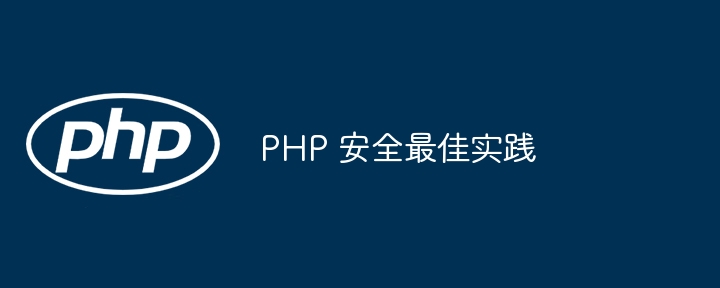
PHP security best practices include: input validation, such as using FILTER_SANITIZE_* to filter data. XSS defense, such as using htmlspecialchars() to escape output. SQL injection defense, such as using prepared statements. Weak password checking, such as using password hashing functions. Use a security framework such as Laravel's middleware or Symfony's security component. Stay updated and update PHP core and third-party libraries regularly.

Preface
PHP is a widely used web development language. But it can be affected by various security vulnerabilities. Following best practices can help reduce these risks and protect your applications.
1. Input validation
Input validation ensures that the data submitted by the user is valid and safe. Use FILTER_SANITIZE_* to filter input data:
$email = filter_input(INPUT_POST, 'email', FILTER_SANITIZE_EMAIL);
2. Cross-site scripting (XSS) defense
XSS allows an attacker to inject scripts into you in the page. Use the htmlspecialchars() function to escape the output:
echo '<h1>' . htmlspecialchars($title) . '</h1>';
3. SQL injection defense
SQL injection allows an attacker to manipulate database queries. Use prepared statements to prepare and execute SQL queries:
$stmt = $conn->prepare("SELECT * FROM users WHERE username = ?");
$stmt->bind_param("s", $username);
$stmt->execute();4. Weak password check
Weak passwords are easily cracked. Use a password hash function to store passwords securely:
$hashedPassword = password_hash($password, PASSWORD_DEFAULT);
5. Use a security framework
A security framework provides built-in protection, such as Laravel's middleware or Symfony security components.
6. Stay updated
Regularly update PHP core and third-party libraries to fix security vulnerabilities. Use Composer to manage dependencies:
composer update
Practical example: verifying secure file upload
Consider the file upload form:
<form action="upload.php" method="post" enctype="multipart/form-data"> <input type="file" name="file"> <input type="submit" value="Upload"> </form>
atupload .php, the file type and size need to be verified to prevent malicious file uploads:
if (isset($_FILES['file'])) {
$allowedTypes = ['image/jpeg', 'image/png']; // 允许的文件类型
$maxSize = 500000; // 最大文件大小(字节)
if (in_array($_FILES['file']['type'], $allowedTypes) && $_FILES['file']['size'] <= $maxSize) {
// 上传文件到安全的位置
} else {
echo '文件类型或大小无效。';
}
}The above is the detailed content of PHP security best practices. For more information, please follow other related articles on the PHP Chinese website!